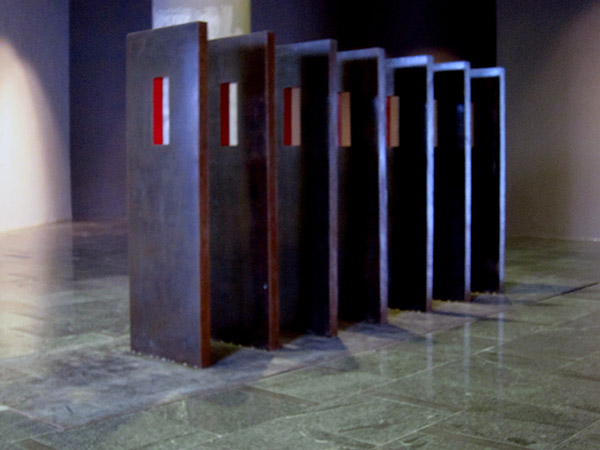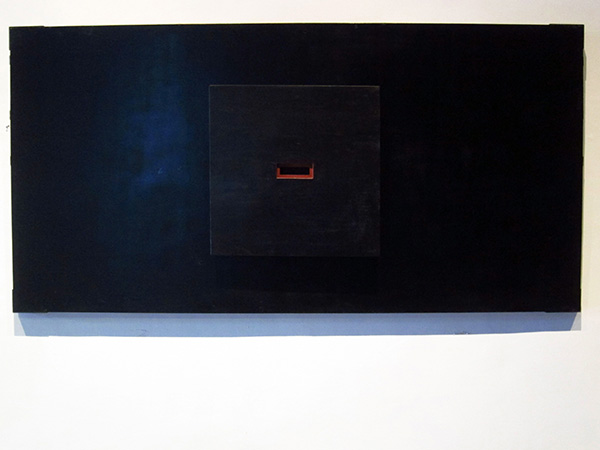Ilza Burchett – The Classicism of The Modern in the Contemporary Art of Vietnam: About The Sculpture of Luong Van Viet

(Vietnamese version available – Đã có bản dịch tiếng Việt)
In a world of rapidly shifting values and unsteadily fluctuating value-systems, the world of social media networking-inspired-self-obsessed-superficiality of the five seconds-attention span-abbreviated-attitudes, much narrow-mindedness, steeped in downright ignorance in general, and towards the arts in particular, where any newborn is already treated as a future creative genius and at the earliest possible-tender-teen-age are ready and willing to proclaim themselves as artists — explaining to the rest of us with an air of discovering the nucleus their minute comings and goings — it becomes near unthinkable to bring into the contemporary art discourse long-standing philosophical concepts like classicism and modernity, which, as human history shows, are by all means no less valid or applicable today; concepts, which informed and established the world-wide criteria of art and its making, for the newly whipped sense of fear of being seen as, or in any way associated with some retrograde traditionalists entrenched in some dinosaur-era of intellectual non-development and out of touch with the hip of the contemporary and the freshly incubated sensibilities of its avant-garde.
This said, the sculptural works of Luong Van Viet in his now on view exhibition Convergence, presents a proper example of a current use of the principals of classicism acquiring the power of modernity in the contemporary visual arts in Vietnam.
The exhibition presents a set of large scale works, each complete in its independence from the others, yet collectively engaging a complex, somewhat brutalist architectural interior exhibition space in a thoroughly interactive manner, bringing it to a point of presentation equal to and no less meaningful than the self-proclaimed mission of an art installation.
And yet, in spite of this obvious hit at a form of contemporary art, that many artists would like to and claim in their work without much substance, Luong Van Viet is satisfied to see and present his works in a classical way: the way of a sculptor, showing an exhibition of sculptures — no more and no less.
His large scale sculptural constructs are done in the proper classical method, by following a small scale preliminary maquette, in which the aim of the artist is to forge the idea and form together until inseparable, and crystallize in a fully developed and completed to the minutest detail physical and emotional entity.

This process allows the artist to properly examine not just the formal problems that occur in creating the work before translating it into a large scale, but infuse it with his personal sensibility, give it his personal touch.
On the other hand, Luong Van Viet’s large scale works are not simply big sculptures, they are monumental in the classical sense of the word, because they take into consideration the relations between the human scale and the proportions and volumes of the architectural space.

What makes the monumentality of his large scale works balanced is the artist’s personal touch.
It is evident in every detail of Luong Van Viet’s work — in its tactility — counteracting the natural coldness of the metal with the natural warmth of the wood, paring down the hard with the soft, bringing into play the sensuality of color, but paying close attention to keeping the texture interactions smooth — almost unobtrusive — so as to preserve the total visual and emotional unity of each work and the exhibition as a whole.

In other words, Luong Van Viet’s sculptural constructs and the exhibition as a whole exhibit the conceptual restraint of classicism, projected through the modernity of a minimalist aesthetic, in turn subverted by the default left traces of the uniqueness of the artist’s touch and his individuality.

This convergence of classicism and modernity is clearly evident in Luong Van Viet’s works: adhering to the fundamental geometric shapes and forms, pushing in or out blocks of light by their absent or present three-dimensional volumes, allowing these to dematerialize the material and make it seem, but only seem — after all this effort poured in to it — irrelevant, but absolutely indispensable to the grand idea of the making a work of art.

This art draws its power from the act of recognizing the unlimited generosity of human experience and knowledge throughout the history of humanity making art, humbly seeking its lessons of understanding and wisdom on the path to advancing the best of it into the future.
Read KVT’s opinion piece on the same exhibition: KVT – Poetry in Steel with Luong Van Viet.
| Ilza holds the deep conviction that there is nothing more damaging than indifference and that only a critique, based on peer to peer assessment of contemporary art practices, is the way to broaden and encourage the creative thought and new original artistic ideas — fostering a better understanding of contemporary visual art and the role of the artist as a creator of cultural values. Ilza Burchett is an internationally exhibiting artist, now based in Hanoi, Vietnam. |













